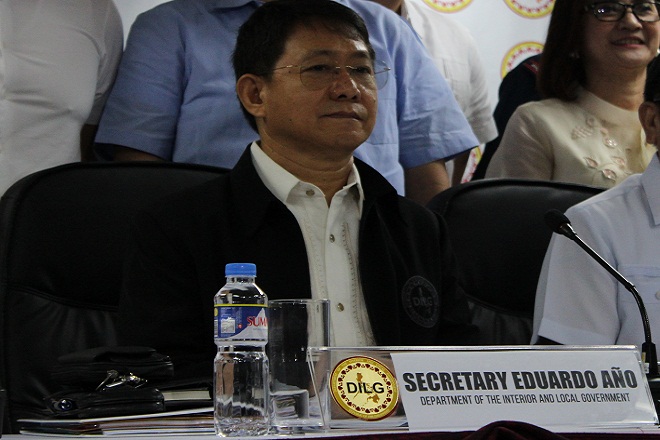DILG bans tricycles from national highways, urges LGUs to create trike task force
February 19, 2020
As part of the road clearing operations being led by the Department of the Interior and Local Government (DILG), Interior and Local Government Secretary Eduardo Año has ordered local chief executives to strictly implement the ban on tricycles, pedicabs and motorized pedicabs on national highways and to create a tricycle task force that shall draw up a tricycle route plan in their areas.
''Motorcycles and pedicabs have not been allowed in national highways for a long time, but many violate this. This not only causes traffic but vehicular accidents. Mayors and police should be strict in implementing the ban,'' said Año.
He said tricycles are also not allowed to even cross or make a U-turn on national highways.
“Local governments must review and modify tricycle routes according to the ban and are encouraged to include in their plans the construction of local roads or overpasses where the tricycles can operate,” he added.
Through DILG Memorandum Circular 2020-036, Año also said each city and municipality should create a tricycle task force separate from tricycle regulatory boards to formulate or review its tricycle route plan.
The task force will be composed of the mayor as chairman, the chief of police as vice-chairman, and the Sanggunian’s committee chair on transportation or public safety, the president of the Liga ng mga Barangay, the head of the tricycle regulatory board, the head of the Department of Public Order and Safety, the planning and development officer, the head of the traffic management office, and the local government operations officer as members.
Representatives of the transportation department and its attached agencies will function as resource persons of the task force, while the head of the city or municipal legal office shall provide secretariat support to it.
Año said the task force is to meet with stakeholders and rationalize all tricycle routes to enforce the ban, identify national roads within the jurisdiction of the LGU, and determine the present and proposed routes in view of drafting a tricycle route plan ( TRP) within 30 days from the issuance of the memorandum.
The plan should include a schematic map of the location of tricycle terminals, the national highways of the LGU and the portions thereof to be used by tricycles if there is no alternative route.
The plan must also detail the installation of appropriate signages, marks for lanes and other safety features to guide all vehicles; create awareness among residents and motorists of new tricycle routes or portions of highways allowed to tricycles because of lack of alternative route; a color scheme or emblem for tricycles that ply a route traversing a national highway; and penalties for violators.
Task forces of adjacent LGUs must coordinate and come up with a combined TRP. Each TRP is valid from two years after the issuance of the memorandum.
The memorandum circular also orders the Philippine National Police to help local leaders enforce the ban.
Año said that non-compliance to the latest directive will warrant the issuance of a show-cause order, and failure to provide a sufficient response shall be a ground for the filing of appropriate administrative cases pursuant to Section 60 of the Local Government Code and other laws and policies.
He also said compliance with the trike ban order will form part of the validation and assessment of the compliance of local government units to the continued implementation of the presidential directive on road clearing.
On top of Republic Act 4136 or the Land Transportation and Traffic Code, prior DILG directives – DILG Memorandum Circulars 2007-11, 2011-68 and 2020-004 --have been issued prohibiting the presence of tricycles and pedicabs on national roads and prescribing the operating conditions and franchising of tricycles. DMS
Latest Videos
- THE UNTOLD STORY EXPERT INSIGHTS INTO THE UKRAINE
- NEGOTIATING A NEW ORDER US RUSSIA TALKS ON UKRAIN
- Ukraine: A Pawn in the Geopolitical Game? Will Trump Intervene?
- US VP VANCE CRITICIZES EUROPEAN DEMOCRACIES AT MUNICH SECURITY CONFERENCE
- UNCOVERING THE WEB OF DECEIT: CIA INFILTRATION OF THE MEDIA
- SHIFTING SANDS: TULSI GABBARD’S CONFIRMATION AND THE EVOLVING GLOBAL LANDSCAPE
- FAUCI SCANDAL: A THREAT TO GLOBAL HEALTH AND DEMOCRACY






